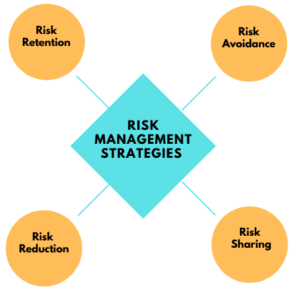
4 Risk Management Strategies to Include in Your Personal Finance Planning
Every day in life, we are faced with different risks. Whatever decision we make carries risks. It could be negligible, or other times, the risk could cause a significant financial or personal.
When it comes to your finances, risk is the possibility of a financial loss from every day happening or any financial decision that you make. While it is not possible to eliminate risks, there are ways you can manage risks in your life and personal finances.
There are four primary ways of managing personal finance risks:

Risk Management Strategies
1. Risk Retention
Also referred to as risk assumption, it occurs when one accepts a particular risk or danger and prepares to absorb it on their own if it happens. If you decide to use risk retention as your risk management plan, it is best to know how much damage or financial loss you will absorb if the worst happens. The next step will be creating a contingency plan to help you overcome that situation.
For instance, you might decide not to insure your expensive laptop or cell phone. You absorb the risk of buying a new gadget if the one you have now is stolen or breaks. You can start saving money in advance for this expense if it occurs.
2. Risk Avoidance
Like the name avoid, risk avoidance is all about avoiding situations or events that compromise or expose you to risk. This strategy is all about minimizing the possibilities of threat exposures because you cannot eliminate risks.
For example, there are areas you avoid going to due to high insecurity. Or you use a different route to get to a particular destination because the other has high crime rates. You can avoid investing in some firms or assets in finance because the rewards do not outweigh the risks.
3. Risk Reduction
This involves taking measures that allow you to lower the overall effect of the risk you might be exposed to in a particular situation. One example of this is going through your financial statement often to ensure you do not incur any late fees or penalties.
Another example is installing security systems around your home to vamp up security and reduce chances of loss through theft. With your investments, you can have an exit plan in place, like liquidating the investment if the loss surpasses a particular percentage, so you do not have to lose 100% of your investment.
Related post: Are You Covered in 2021? Here Are 4 Must-Have Insurance Policies
4. Risk Sharing
In some instances, you do not have to bear the loss from the risk all by yourself. That’s where risk-sharing or risk distribution comes in place. Risk-sharing allows you to distribute the potential loss with others, like an insurance company. When you buy an insurance product, you are transferring some of the risks to the company who in return shares the risks with other individuals.
In the end, there is a pool of individuals and organizations seeking protection from the insurer against the same risks. You only pay premiums in exchange for this protection. If, for example, you are taking auto insurance against accidents, you will pay premiums together with others in this pool. If you end up in an accident, the insurance company pays you from this pool.
Learn more in a related post: What You Need to Know About Life Insurance in Kenya
Example
Let’s look at an investment decision and how you can use each of the above risk management strategies. You have an investment opportunity that allows you to either lose your entire capital or double it; here is how you can go about it:
- You can go ahead with the investment, no matter what happens – that’s risk retention.
- You can decide not to go ahead with the investment – that’s risk avoidance.
- You can find ways to reduce your losses if the investment does not work by 20% – that’s risk reduction.
- You can decide to bring in some friends into the investment – that’s risk-sharing.
The Bottom Line
Your every decision exposes you to risks, and there is no way you can eliminate risks. However, you can take steps to manage exposures to different risks. In personal finance planning and management, we often forget our exposures to risks and fail to manage those risks. Always remember to factor in risks in your personal finance planning and apply the best risk management strategy.




